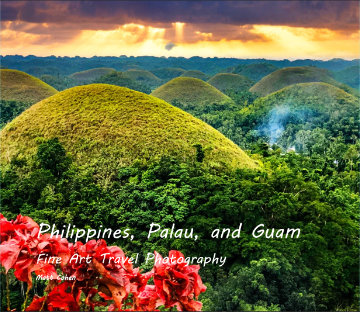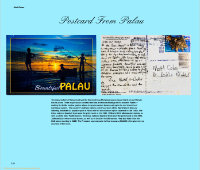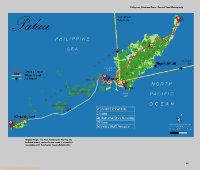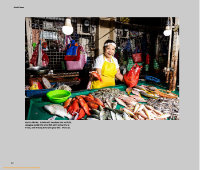 In the prologue of Philippines, Palau, and Guam, Matt Cohen says he considered but discarded the idea of organizing the book along the lines of the Philipines’ four ‘B’s — basketball, beauty contests, boxing, and beaches. I guess that was on my mind as I scanned it for the first time and found myself registering three ‘C’s — color, culture, and composition.
In the prologue of Philippines, Palau, and Guam, Matt Cohen says he considered but discarded the idea of organizing the book along the lines of the Philipines’ four ‘B’s — basketball, beauty contests, boxing, and beaches. I guess that was on my mind as I scanned it for the first time and found myself registering three ‘C’s — color, culture, and composition.
That last ‘C’, composition, is an obvious element of all photographs. Sometimes composing a photograph really means physically posing the subjects and I don’t doubt that there was some of that employed here. But I believe that most of Cohen’s composing consisted of positioning the camera and framing subjects he had limited, if any, control over. Mountains and buildings never move in response to a photographer’s instructions and the same is often true of people. In some cases, composing continues after the shutter clicks with selective cropping and such and Cohen seems to be adept at this as well. Given the book’s title, it is probably also obvious that culture has a big role. One of the attractions of these islands is the fact that their culture is different than that of mainland USA and one of Cohen’s goals was to document those differences. The bulk of his photos contain some aspect of island culture. That island culture is filled with color is pretty obvious too. The most common sources are brightly colored food and clothing but bright splashes are frequently supplied by the land itself.

 Although it is not presented as such, the book really is a travelogue of sorts. Most if not all of the travel photos were taken during a single extended trip taken by the author and his wife in early 2023. After deciding not to use the four ‘B’s as organizing tools, Cohen went with a fairly straightforward geographical organization. The Philippines gets three chapters covering the three areas where they spent the most time. These are Manila, North Luzon, and Cebu/Bohol. Palau and Guam each get their own chapter. Each chapter begins with an actual postcard that the Cohens mailed to themselves from the region covered by the chapter accompanied by a brief description of the region. A map, with locations of interest marked, follows.
Although it is not presented as such, the book really is a travelogue of sorts. Most if not all of the travel photos were taken during a single extended trip taken by the author and his wife in early 2023. After deciding not to use the four ‘B’s as organizing tools, Cohen went with a fairly straightforward geographical organization. The Philippines gets three chapters covering the three areas where they spent the most time. These are Manila, North Luzon, and Cebu/Bohol. Palau and Guam each get their own chapter. Each chapter begins with an actual postcard that the Cohens mailed to themselves from the region covered by the chapter accompanied by a brief description of the region. A map, with locations of interest marked, follows.
 The chapters are then filled with pictures of people, places, and things accompanied by text ranging from a few words to a few paragraphs. Most questions I had when first encountering a photo were answered in nearby text. The places pictured range from mountains to markets. Things range from colorful new balloons offered for sale to an abandoned Japanese tank slowly being claimed by foliage. People include unnamed workers, islanders in native dress, a mayor, a governor, a president, and a would-be bride left at the altar.
The chapters are then filled with pictures of people, places, and things accompanied by text ranging from a few words to a few paragraphs. Most questions I had when first encountering a photo were answered in nearby text. The places pictured range from mountains to markets. Things range from colorful new balloons offered for sale to an abandoned Japanese tank slowly being claimed by foliage. People include unnamed workers, islanders in native dress, a mayor, a governor, a president, and a would-be bride left at the altar.
Had I really wanted to include a fourth ‘C’ in my list of components, I guess I could have used cockfighting. I was surprised and maybe even a little shocked to come across two photos of fighting cocks in the book. The photos are not particularly graphic but they nonetheless gave me pause. At the end of that pause, I accepted them as part of the documentation of a culture and a reminder that not every aspect of every culture — most definitely including our own — is pleasant.
Philippines, Palau, and Guam includes an appendix where Cohen provides more technical information on the photos and even shares the itinerary of the trip that produced them. The book is self-published and at present the best way to learn how to acquire it is to contact the author through his website at MattCohenTravelPhotography.com. I will update this review when other information becomes available.
